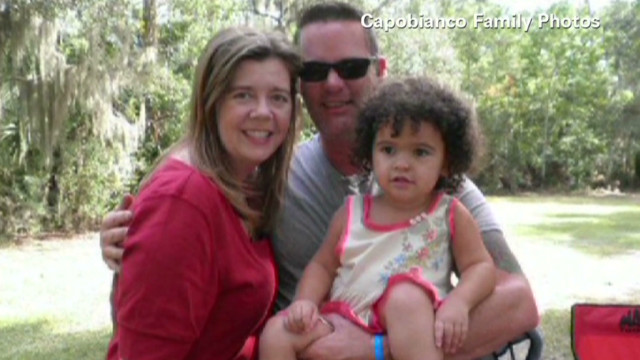Biracial women pushed to undergo genetic screeening: Cobble Hill hospital focuses on mixed race
As interracial families become more common, LICH docs quiz women on ethnicity
Louise Dogan and Michael Greenbaum
As interracial families have beome more common, Dr. Millicent Comrie,
Chief of Obstetrics and Gynecology at Downstate Long Island College
Hospital, has urged her staff of about 40 physicians to quiz patients
about their ethnic backgrounds.
Those from multicultural backgrounds are are sent to talk with a DNA expert who maps out how their heritage could make them sick.
“Ethnicity plays a big part in your healthcare,” said Comrie naming a slew of hereditary diseases such as sickle cell anemia which plagues the black community and Tay-Sachs disease found in many Jewish families.
“We can’t worry about sensitivity when it comes to race. What you see isn’t always what you get,” Comrie said. “If we don’t ask the right questions. We will come up short.”
Census stats show that 2 % of Kings County identified as being “two or more races” in 2010 with the largest concentrations in upper-middle class enclaves like Park Slope and Prospect Heights.
Popular combinations include having at least one parent who is either European Jewish, black, or Chinese - meaning the person could inherit a long list of illnesses.
Comrie and her staff map out patients’ family health histories as well as study their blood trolling for more risk factors.
Louise Dogan, 41, - born to a eastern European Jewish mom and an African dad - worked with doctors tracing her Jewish relatives’ aliments after her mother, aunt, and cousin were diagnosed with breast and ovarian cancers.
Physicians found their sicknesses were tied to the BRCA1 and BRCA2 genes, often linked to breast and ovarian cancer in Jewish women. But Dogan’s test for BRCA was negative.
“I am a hybrid. I am different from the rest of my family,” said Dogan who is eight-months pregnant.
Dogan’s mother-in-law is a Polish gentile who also had breast cancer. Her father-in-law is a Polish Jew.
“We have to find out if she had that [BRCA] gene and the implications on the child,” Dogan said. “You need to know your background. You can’t have biases based on what you look like.”
Interracial couples and their ethnically ambiguous offspring are common sights throughout the borough.
European Jews are prone to about two dozen afflictions including cystic fibrosis - which can lead to fatal lung and intestinal diseases and is also common in white non-Jews.
Sickle cell, Thalassemia, and other blood disorders impact those with African and Asian roots.
“In the future, we are going to have so many people with so many different ethnicities,” said LICH’s genetic guru Regine Lim who is half Chinese and white.
“When you are more than one race, you have more of a diverse genetic composition...we are talking to people before they have a baby...the more time we have the better.”
Those from multicultural backgrounds are are sent to talk with a DNA expert who maps out how their heritage could make them sick.
“Ethnicity plays a big part in your healthcare,” said Comrie naming a slew of hereditary diseases such as sickle cell anemia which plagues the black community and Tay-Sachs disease found in many Jewish families.
“We can’t worry about sensitivity when it comes to race. What you see isn’t always what you get,” Comrie said. “If we don’t ask the right questions. We will come up short.”
Census stats show that 2 % of Kings County identified as being “two or more races” in 2010 with the largest concentrations in upper-middle class enclaves like Park Slope and Prospect Heights.
Popular combinations include having at least one parent who is either European Jewish, black, or Chinese - meaning the person could inherit a long list of illnesses.
Comrie and her staff map out patients’ family health histories as well as study their blood trolling for more risk factors.
Louise Dogan, 41, - born to a eastern European Jewish mom and an African dad - worked with doctors tracing her Jewish relatives’ aliments after her mother, aunt, and cousin were diagnosed with breast and ovarian cancers.
Physicians found their sicknesses were tied to the BRCA1 and BRCA2 genes, often linked to breast and ovarian cancer in Jewish women. But Dogan’s test for BRCA was negative.
“I am a hybrid. I am different from the rest of my family,” said Dogan who is eight-months pregnant.
Dogan’s mother-in-law is a Polish gentile who also had breast cancer. Her father-in-law is a Polish Jew.
“We have to find out if she had that [BRCA] gene and the implications on the child,” Dogan said. “You need to know your background. You can’t have biases based on what you look like.”
Interracial couples and their ethnically ambiguous offspring are common sights throughout the borough.
European Jews are prone to about two dozen afflictions including cystic fibrosis - which can lead to fatal lung and intestinal diseases and is also common in white non-Jews.
Sickle cell, Thalassemia, and other blood disorders impact those with African and Asian roots.
“In the future, we are going to have so many people with so many different ethnicities,” said LICH’s genetic guru Regine Lim who is half Chinese and white.
“When you are more than one race, you have more of a diverse genetic composition...we are talking to people before they have a baby...the more time we have the better.”







